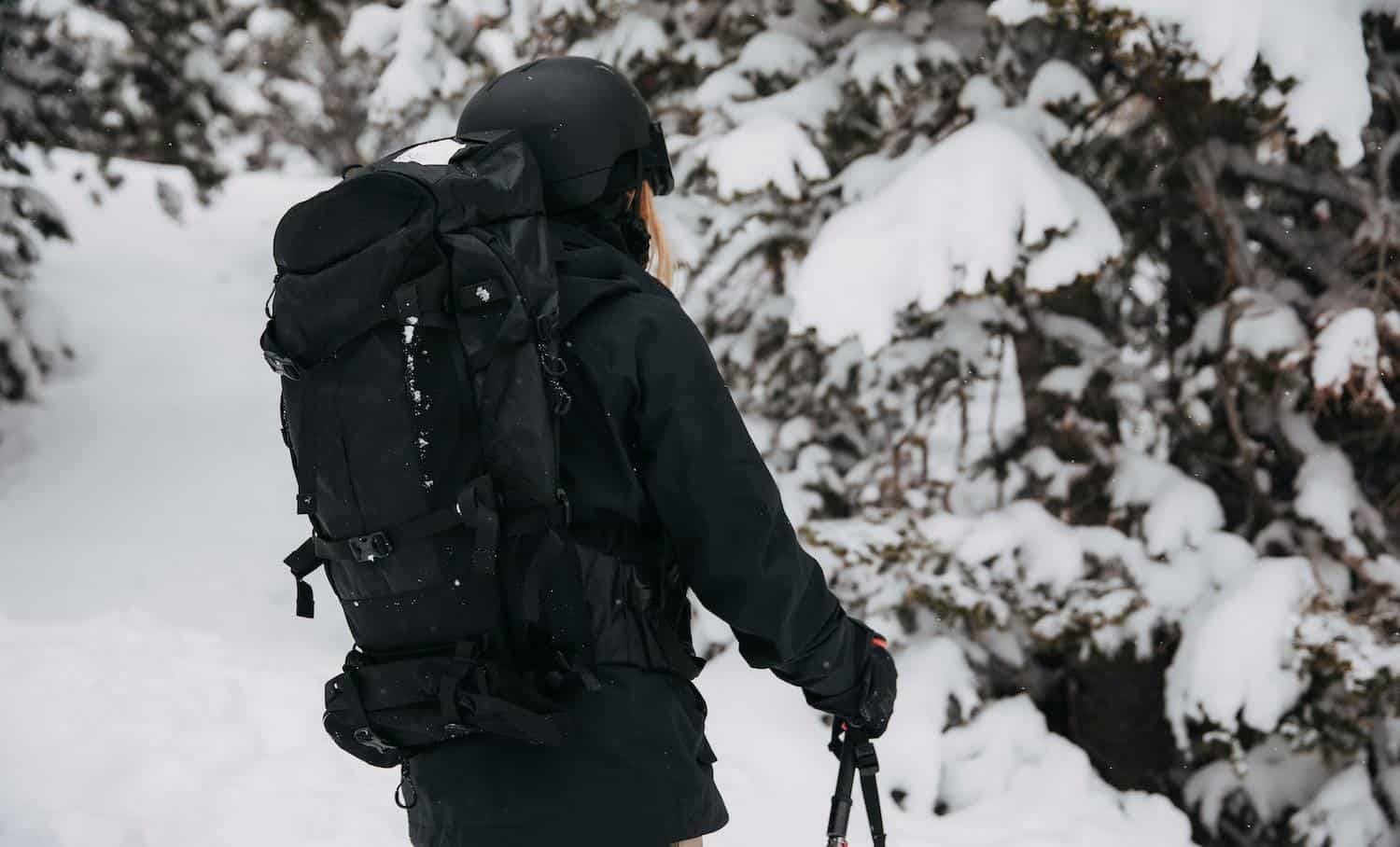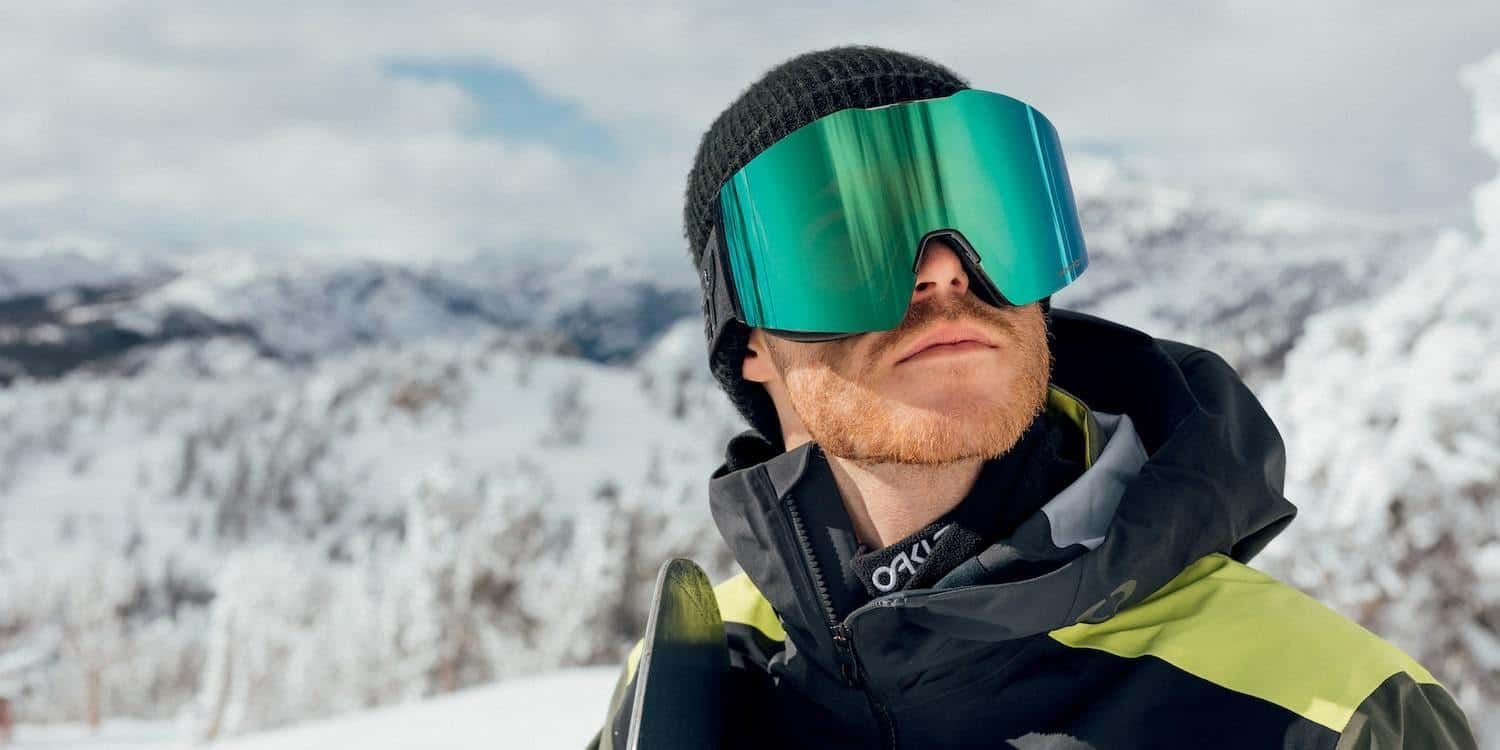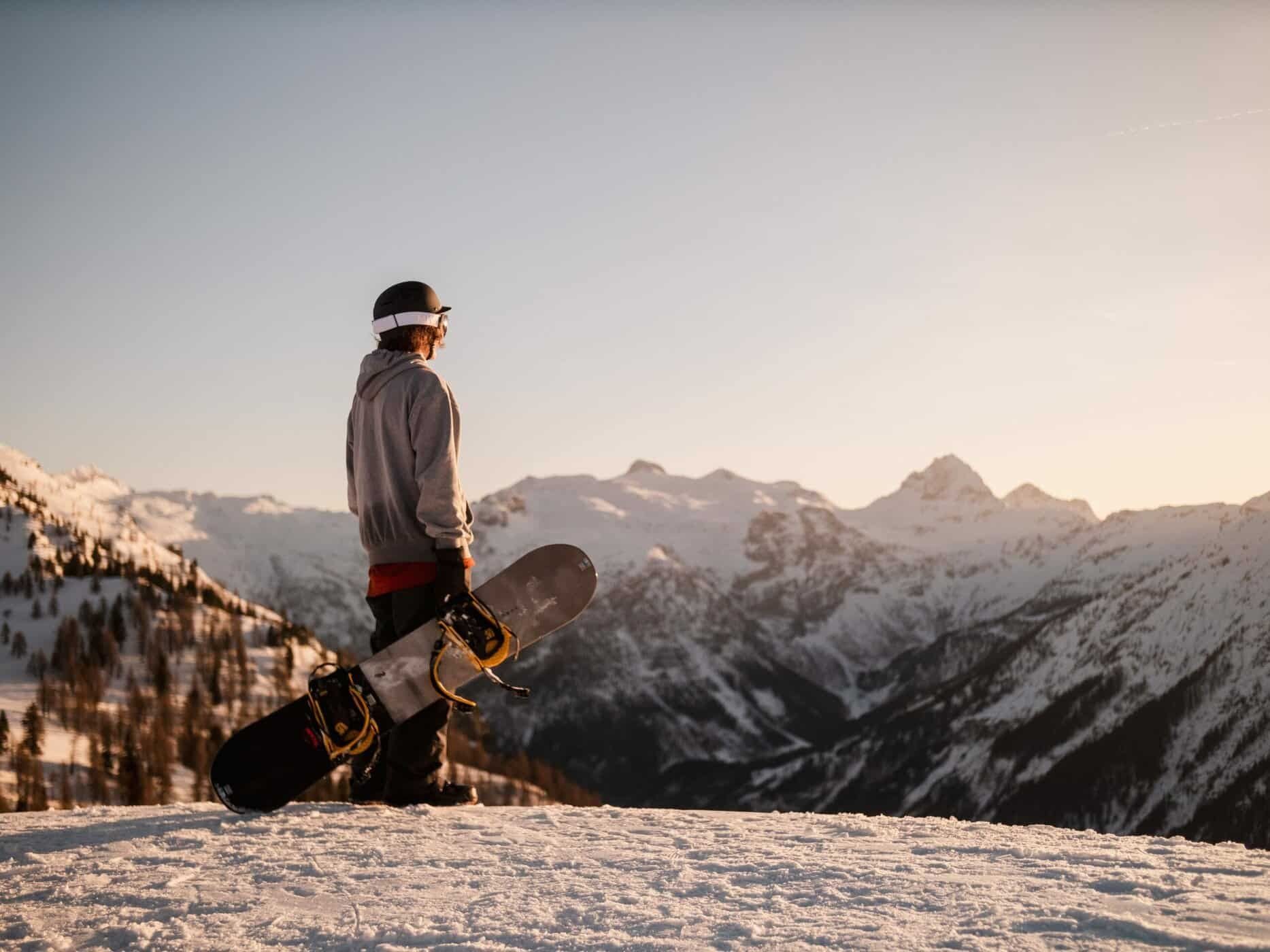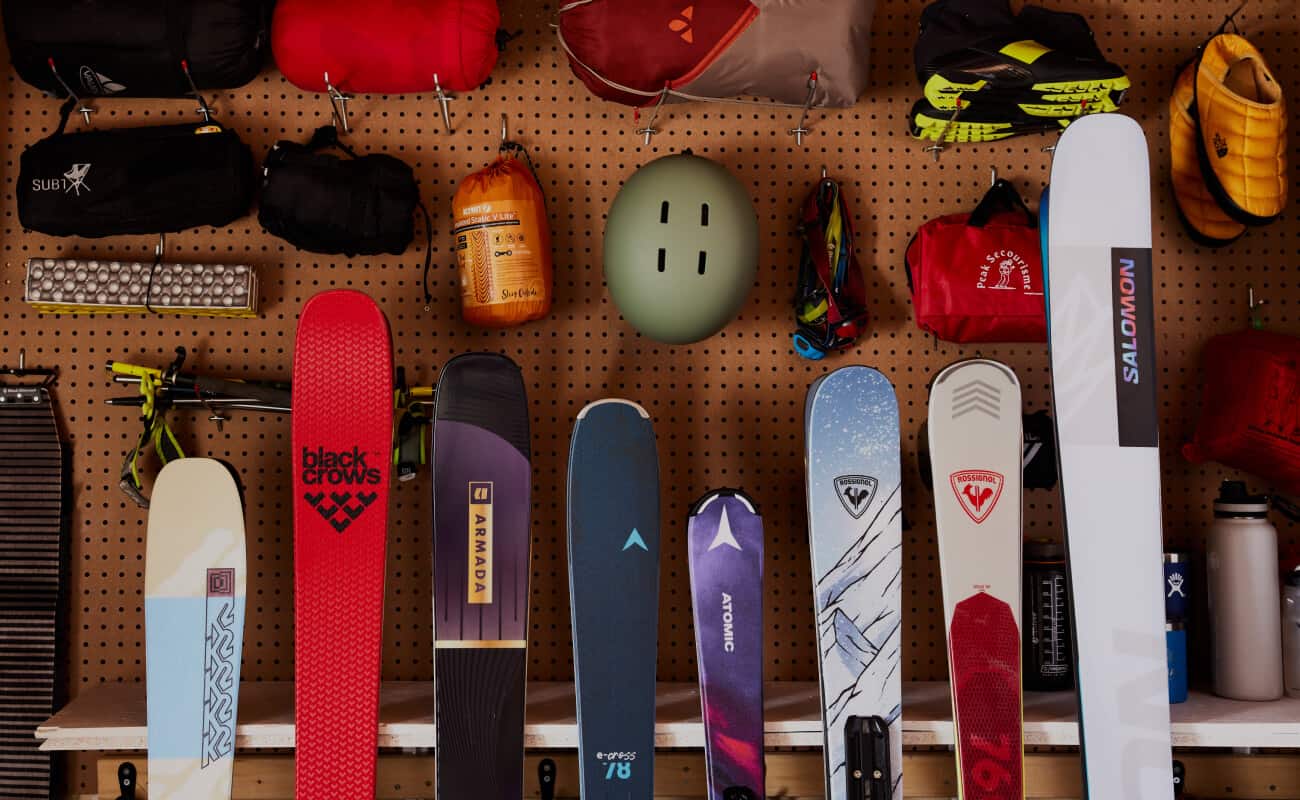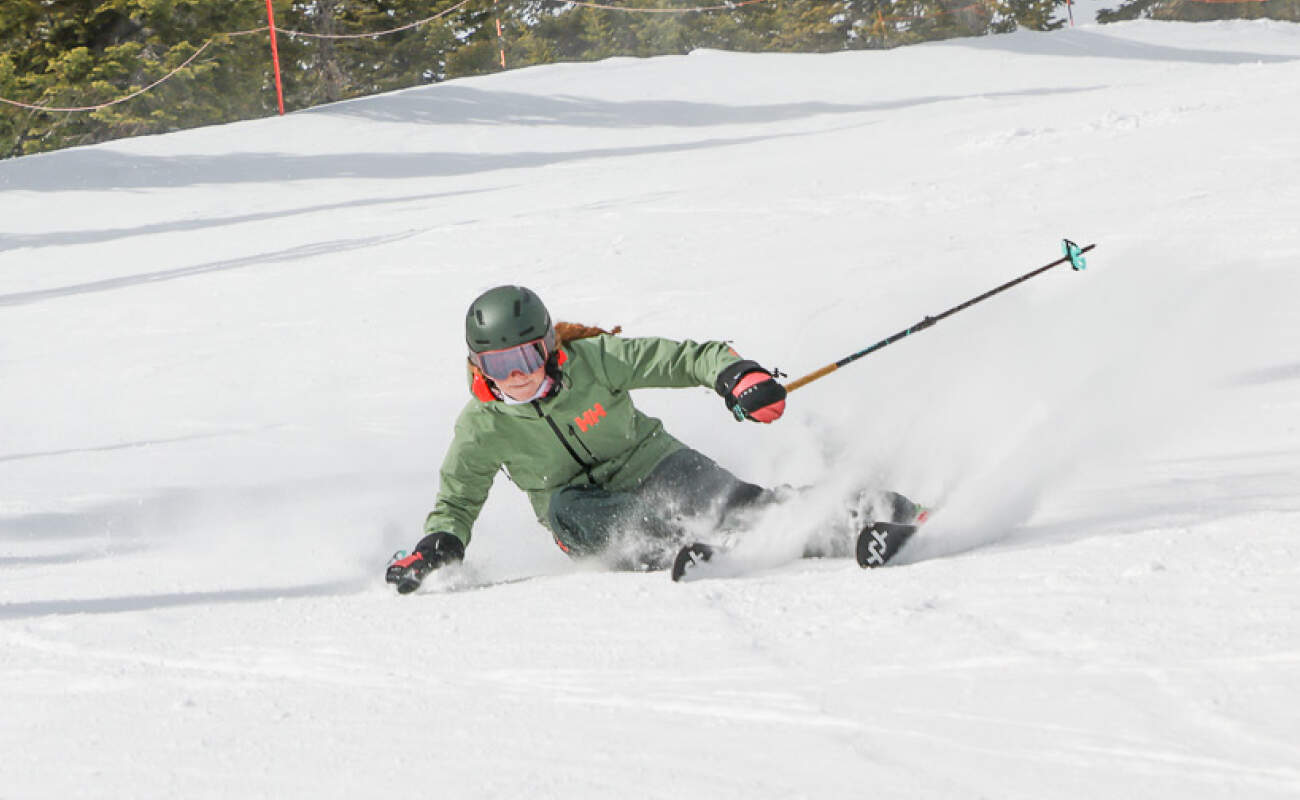One of the initial challenges to backcountry skiing is the equipment. In order to skin and glide across vast tracts of undeveloped land, specialised ski gear, like touring ski bindings, is required. Below, we’ve rounded up the best backcountry ski bindings available for 2024. With one of these touring bindings, you’ll be much closer to realising your backcountry skiing dreams.
Critical Terms
When shopping for touring ski bindings, there are a few terms that are helpful to keep in mind.
1. Type
As elaborated upon in our ski buying guide, there are three types of touring ski bindings, tech, frame and hybrid. Tech bindings are the lightest and easiest to use for uphill movement. Frame bindings are much sturdier for downhill descents, and hybrids fall somewhere in between.
2. Weight
A heavier touring ski binding is not a deal breaker for short to medium backcountry touring adventures. However, once you begin touring over long distances or multiple days, light touring options become much more attractive.
3. Riser
Uphill travel requires a heel that can rise from the binding. While all touring ski bindings have this, some go the extra step and offer multiple riser levels. This mode lifts up the heel apparatus at angled increments, giving you more control as you travel up steeper slopes.
4. Price
In general, tech bindings are the most expensive because of their specialised design. Most backcountry skiers swear by them, but tech bindings also require tech-specific boots, so you may be buying more than one item to finish your setup. Frame and hybrid binding are a bit heavier and clunkier but often much less expensive and compatible with a wider range of boots.
Best Options for Hybrid Bindings
MOST RESPONSIVE HYBRID BINDINGS
- Binding Type: Hybrid
- Weight: 875 g (1750 g per pair)
- Riser Heights: 1 + Flat
The Atomic Shift MNC tech binding is a responsive and practical ski-touring binding. The bindings are crampon compatible, come with a heel riser, and don’t weigh as much as many hybrid models.
As with all tech bindings, the price is a bit higher than a hybrid design, and the bindings need tech-specific boots. If you’re a fan of atomic tech bindings, this option will likely please you. Prefer a higher DIN? Check out the Atomic Shift 13 MNC.
Price: 0.00$
Brand Name | Product Type
MOST VERSATILE HYBRID BINDINGS
- Binding Type: Hybrid
- Weight: 737 g (1430 g per pair)
- Riser Heights: 2 + Flat
The Marker Kingpin hybrid binding is designed to mimic the best of both resort bindings and touring bindings. The weight is notably heavier than some tech bindings but also provides a lot more support on the downhill. A lot of this support is also mentally beneficial. Beefier ski bindings help you feel sturdier and more confident in your gear.
Hybrid bindings are going to be a bit heavier than the lightest touring bindings, and they don’t have as much of a pivoting movement, which can make cutting switchback or breaking trail a bit unwieldy. However, for someone who skis resorts and occasionally pops out of a backcountry gate or pursues shorter touring adventures, this binding checks a lot of boxes.
For a lower DIN, you can also pick up the Marker Kingpin 10.
Price: 0.00$
Brand Name | Product Type
BEST RESORT-FIRST HYBRID BINDING
- Binding Type: Hybrid
- Weight: 1219 g (2438 g per pair)
- Riser Heights: 1 + Flat
The Marker Duke PT 13 is another great hybrid tour binding option. This one maximises downhill performance but may not be realistic for most backcountry skiers. If you’re interested in a boot that can shred terrain at a resort and has some basic touring components, the Marker Duke PT 13 is worth a closer look.
This touring binding suffers from a heavier design and clunky uphill movement. You can, however, remove the toe piece while travelling uphill, which sheds the overall weight and is a nice design touch. The Marker Duke PT 13 is a reliable and sturdy binding best used for resort-first skiers who are willing to dabble in some lighter backcountry touring.
The Marker Dukes are also available in other sizes, including the Duke PT 16.
Price: 0.00$
Brand Name | Product Type
BEST DOWNHILL HYBRID BINDING
- Binding Type: Hybrid
- Weight: 875 g (1750 g per pair)
- Riser Heights: 1 + Flat
The Salomon S/LAB SHIFT MNC 10 bindings are a little heavier than the lightest touring bindings out there, but they provide superior downhill performance. They can also be used in both a backcountry or ski resort setting because of the hybrid design. If you’re hunting for a nice hybrid pair that provides support and allows you to go on short to medium-touring adventures, the Salomon S/LAB SHIFT MNC 10 is an excellent choice.
Due to the overall weight and size of the binding, you probably don’t want to use these for extended tours in the backcountry. They are also not the most budget-friendly hybrid bindings on the market. However, for superior downhill performance and rock-solid construction, Salomon has made a very attractive hybrid binding.
Price: 0.00$
Brand Name | Product Type
Best Options for Tech Touring Bindings
MOST SUPPORTIVE TECH TOURING BINDINGS
- Binding Type: Tech
- Weight: 641 g (1282 g per pair)
- Riser Heights: 2+ flat
The Black Diamond Fritschi Tecton 13 is a great tech binding with multiple heel riser heights and a fantastic toe-piece design. The heel piece is also designed to resemble the supportive nature of a regular ski binding. While the binding does require specific tech boots, the sturdy construction, relatively lightweight design, and multiple heel rise levels make the FRITSCHI a worthy touring binding.
Like other tech bindings, this one is expensive and only compatible with tech-specific boots. However, the performance is notable, the construction is sturdy, and the hardened plastic helps dampen vibrations from the ski, offering a smooth ride in variable conditions. For its versatility and performance, this is a great choice for a tech binding.
Price: 0.00$
Brand Name | Product Type
MOST VERSATILE TECH TOURING BINDINGS
- Binding Type: Tech
- Weight: 545 g (1090 g per pair)
- Riser Heights: 2 + Flat
The Black Diamond Fritschi Vipec EVO 12 90 MM tech binding is for people who want light, versatile touring bindings. The heel risers are easy to engage, transitioning from tour to ski mode is simple, and both the toe and heel pieces have adjustable relief values. For the lightweight build, intuitive uphill movement and sturdy downhill performance, this is a top choice for tech bindings.
The price for tech bindings is high, coupled with the need to purchase specific tech boots. However, the adjustable release values help you eject from your bindings if you fall. A quick ejection helps prevent torque injuries that occur if you’re falling with skis still attached to you. For the increased safety focus, ease of use and overall low weight, the Fritschi Vipec EVO 12 is a good touring binding selection.
Price: 0.00$
Brand Name | Product Type
MOST LIGHTWEIGHT TECH TOURING BINDINGS
- Binding Type: Tech
- Weight: 179 g (358 g per pair)
- Riser Heights: 2 + Flat
Dynalift is synonymous with durability and performance. And the Dynafit Superlite 150+ Touring Bindings are no exception. As the name implies, the Superlites are unbelievably lightweight: They hover around 150 grams, though weigh closer to 179 g when you throw in the mounting screws. This makes them some of the most lightweight tech touring bindings on the market. And yet, despite their low weight, the Superlites are also very durable.
Customisable options, like brakes and an adjustment plate, make them versatile for every type of skier. Though there are better out-of-the-box tech touring options available, there’s a good chance that these can be easily configured to your liking.
Price: 0.00$
Brand Name | Product Type
Buying Guide
When considering what touring ski bindings to buy, it’s helpful to keep the following points in mind.
Hybrid vs. Tech Bindings
Backcountry touring requires a specific binding that allows your heel to rise. This motion lets you drag a ski forward in line with your stride without having to lift your ski into the air with every step. In general, there are three types of backcountry ski bindings: frame, tech, and hybrid.
Tech bindings are the more specialised variety, which requires specific boots to fit. They are the lightest of the options and are great for uphill movement and touring over long distances. If you’re going for a longer adventure than a skin-up ski-down, tech bindings will likely be what you get.
Frame bindings are an older and heavier binding type that provides superior support on the downhill. Despite their added weight, frame bindings hold your ski boots better, can fit any regular downhill ski boot, and are usually less expensive. They are going out of style quickly, however, with the advent of new hybrid bindings.
Hybrid bindings utilise components of both tech and frame bindings, which grants freer movement while retaining superior downhill performance. The toe pieces are modelled off of tech bindings, while the heel pieces are more like frame bindings. The overall weight is less than a traditional frame binding but still heavier than many tech bindings.
The bottom line is this: Go with tech bindings if you’re in the market for something lightweight and that offers increased freedom of movement in the backcountry. Opt for hybrid bindings if you need something versatile enough to take you from the backcountry trails to the alpine slopes.
Uphill vs. Downhill performance ratio
Tech bindings have made strides in recent years. They were originally known as a lighter variety that performed admirably on longer touring adventures and uphill movements. Older tech bindings could perform decently on the downhill but couldn’t match frame bindings. To a degree, that distinction still holds, frame bindings offer superb downhill support, but tech bindings are catching up.
Frame bindings perform well when moving uphill, but they are heavier, so it takes more energy per stride. Tech bindings allow for a lot more freedom of movement, which can lead to creative uphill line selection. Cutting switchbacks in fresh snow with frame bindings is noticeably harder.
It is worth noting that because tech bindings rely on smaller pins and connection points, they are more likely to break with repeated aggressive skiing.
Ski width
Not all skis fit all bindings. You need to make sure the ski you’d like to put bindings on is compatible. To do this, measure the width of the ski in mm at the waist. The waist is the thinnest part of the ski, usually toward the center. Your bindings need to have breaks that are the width of the ski waist or slightly wider.
Any break setup that is thinner than your skis won’t allow the brakes to deploy. Bindings that are too wide, roughly 15 mm, or more, wider than your skis, will drag as you ski. This can lead to awkward ski movements, torque injuries and damaged breaks.
When in doubt, always consult a ski technician.
Binding Weight
Tech Bindings are remarkably lightweight, which explains their almost exclusive use for longer backcountry adventures. They are usually composed of two pieces, a toe and heel piece, both of which are lightweight. The best tech bindings are usually between 1 and 5 pounds.
Frame bindings, by contrast, have a much larger weight range. They can easily be over 5 pounds and still function well on the downhill. Hybrid bindings usually fall somewhere in between; they are seldom less than a few pounds or more than 5.
For more information, visit our article on choosing bindings.
Boots Compatibility
Tech bindings need tech binding-specific boots. The combination can end up being quite expensive. Regular ski boots won’t work with tech bindings.
Frame bindings are much more compatible. A regular ski boot can fit into a frame binding without issue. There are many tech boots that can fit into frame bindings as well.
How to install ski bindings?
Never underestimate the importance of ski binding installation. To ensure your safety on the slopes, it’s crucial to select a certified technician. These professionals possess the necessary expertise to properly set up your bindings, taking into account factors like skier type and weight. Choosing a certified technician minimizes the risk of accidents or injuries resulting from improper installation. Prioritize your safety and the safety of others by always opting for a certified technician.
FAQ
Q: Do you need special bindings for backcountry skiing?
A: Yes. Backcountry bindings allow your heel to rise away from a fixed position, which gives you the leg mobility to move your ski forward (and uphill). Keep in mind that there are two types of touring ski bindings, frame and tech. Each comes with its own benefits and limitations.
Q: Can you use touring bindings for downhill?
A: Yes, but it’s best not to rely on them for downhill skiing. Tech bindings, which rely on a small set of pins and specialized boots, are the lightest touring ski bindings but can also break a lot easier. Frame bindings have the support necessary for aggressive downhill skiing.
Q: How do backcountry bindings work?
A: Backcountry bindings work in two general ways. First, with tech bindings, the binding has to match a specific touring ski. The tech binding front piece has two pins that lock into preset grooves on the side of the ski boot. These pins are what attach your boots to the binding.
When you lift your heel to stride out, the pins hold everything together and allow for much more fluid movement. Tech bindings come with a toe and heel component, the latter being used to lock your heel down when you transition from uphill to downhill skiing.
Frame bindings are heavier, and the toe and heel pieces are connected. There is still a heel rising component, but instead of relying on pins, the frame binding relies on the “frame” of the binding, and each movement lifts up the frame from its attachment points on the skis.
To go downhill, lock the pieces together.
CONCLUSION
This season, you can look forward to the best in ski binding technology. With a focus on hybrid bindings that blend versatility and safety, skiers now have more options than ever. Whether you’re exploring the backcountry or enjoying the resort, this year’s bindings offer improved performance, setting the stage for an exciting skiing season. Embrace the future of skiing with confidence and hit the slopes in style.
Next up, pair your new set of bindings with the best ski boots for men and the best ski boots for women in 2024.


